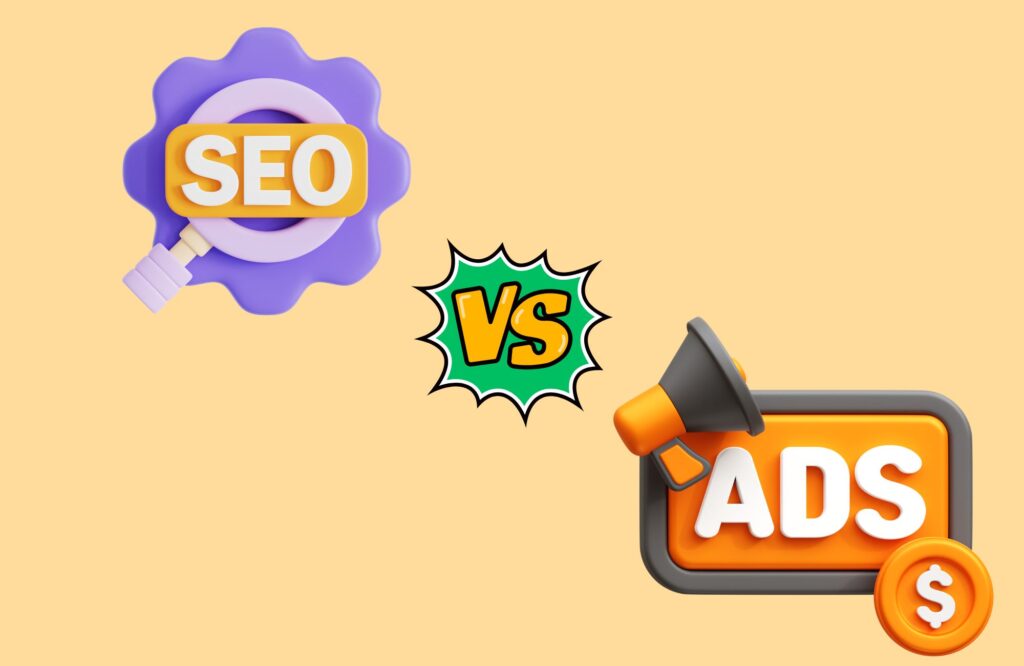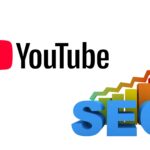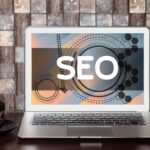In today’s digital marketing landscape, two powerful strategies dominate the conversation for lead generation: SEO (Search Engine Optimization) and Google Ads. Both have distinct advantages and can play complementary roles, but deciding between them requires a deep understanding of how each works. This comprehensive guide will explore the strengths of both SEO and Google Ads, helping you decide which strategy is best suited for your business. We’ll also look at how combining both can yield even better results.
SEO vs Google Ads: Key Differences
Before diving into the specifics of when to use SEO and when to leverage Google Ads, it’s important to first understand the fundamental differences between these two marketing strategies.
What is SEO?
SEO (Search Engine Optimization) refers to the process of optimizing your website to rank higher in organic search results on search engines like Google. It focuses on improving several elements, such as keyword optimization, content quality, user experience, and backlinking, to make your website more visible to search engine algorithms.
The main goal of SEO is to drive organic traffic to your site without paying for each click. This strategy is a long-term investment that requires time, but once you reach high-ranking positions, the benefits can last for a long time.
What is Google Ads?
Google Ads, on the other hand, is a paid advertising platform that allows businesses to bid on specific keywords to have their ads displayed in Google’s search results. Businesses only pay when a user clicks on their ad (pay-per-click or PPC). Google Ads offers instant visibility and allows you to target specific keywords, locations, and demographics.
Unlike SEO, which takes time to show results, Google Ads can drive immediate traffic as soon as the campaign is live. However, the traffic stops once the budget runs out.
When to Use SEO for Lead Generation
SEO is an excellent long-term strategy for businesses looking to build a sustainable online presence. It’s ideal for businesses that want to capture organic traffic and establish a strong brand presence over time.
SEO for Long-Term Business Growth
One of the key benefits of SEO is that it provides long-term value. Once your website ranks on the first page of Google search results, it can continue to generate traffic without additional costs. The more high-quality content you produce and the more backlinks you earn, the stronger your organic ranking becomes, leading to continuous growth in visitors and leads.
SEO is the right choice for businesses that are looking to:
- Build credibility and trust with their audience over time.
- Invest in content marketing efforts like blogs, case studies, and informational guides.
- Rank for relevant search queries organically without the need for ongoing payment.
Ideal Scenarios for SEO
- Highly competitive industries: When the market is saturated, SEO helps businesses build authority and rank for relevant keywords.
- Long-term investment: Businesses with the resources to invest in ongoing content creation and optimization.
- Brand-building: Businesses that want to build lasting authority and visibility over time.
Timeframe to See Results
Typically, SEO efforts take 3-6 months to produce significant results. This timeline varies based on the competitiveness of your industry, the quality of your SEO efforts, and the strength of your existing online presence.
When to Use Google Ads for Lead Generation
If you’re looking for immediate results, Google Ads might be the solution for your business. Unlike SEO, which can take time, Google Ads offers instant visibility in search results and drives targeted traffic immediately.
Google Ads for Immediate Results
One of the most attractive features of Google Ads is its immediacy. As soon as you launch your campaign and bid on the right keywords, your ads will appear on Google’s search engine results pages (SERPs), driving traffic to your site. This makes it a powerful tool for businesses needing quick visibility.
Google Ads is ideal for businesses looking to:
- Capture traffic for time-sensitive offers (e.g., sales, promotions).
- Drive targeted traffic to landing pages quickly.
- Promote seasonal products or services.
Best Scenarios for Google Ads
- Time-sensitive campaigns: If you’re running a limited-time offer or promotion, Google Ads provides the visibility you need.
- New businesses: Start-ups or businesses entering a competitive market can use Google Ads to establish immediate visibility.
- Highly competitive keywords: When it’s hard to rank organically for competitive search terms, Google Ads offers a quick alternative.
Cost and ROI Considerations
Google Ads operates on a pay-per-click (PPC) model, so businesses pay for each click on their ad. Costs vary depending on:
- Keyword competitiveness: The more competitive the keyword, the higher the cost per click.
- Ad quality: Ads that are more relevant to the user’s search intent will typically cost less to run.
- Target audience: The location and demographics you target can also affect the cost.
For businesses with a limited budget, Google Ads may require continuous monitoring and optimization to ensure a positive ROI.
Combining SEO and Google Ads for Maximum Impact
While SEO and Google Ads offer unique advantages, combining both can help maximize your lead generation efforts. By integrating the benefits of organic search with the immediacy of paid search, you can create a well-rounded strategy that delivers both short-term and long-term results.
Why Combine Both Strategies?
When combined, SEO and Google Ads allow your business to:
- Maximize visibility: Appear in both organic search results and paid ads, doubling your chances of being noticed.
- Target multiple search intents: While SEO targets informational queries, Google Ads can capture commercial intent or those ready to buy.
- Share insights between strategies: The data you gather from Google Ads (such as high-converting keywords) can help inform your SEO strategy.
How to Integrate Both Strategies
- Use Google Ads data for SEO: Review keyword performance from Google Ads campaigns and apply these insights to optimize your content.
- Run paid ads to test content: If you have multiple variations of landing pages or content, use Google Ads to test which version performs best.
- Leverage both strategies for retargeting: If someone clicks on your Google Ad but doesn’t convert, you can follow up with SEO-driven content that further nurtures that lead.
Real-World Example
For a local service provider, such as a plumber, Google Ads can drive immediate leads for keywords like “emergency plumber near me,” while SEO can help optimize the site for broader search terms like “how to fix a leaky faucet,” resulting in ongoing traffic from organic search.
Measuring the Success of SEO and Google Ads
To determine which strategy is working best for your business, it’s important to measure the success of both SEO and Google Ads campaigns.
Measuring SEO Success
- Organic Traffic: Track how much traffic is coming from organic search, and compare it with previous periods to assess growth.
- Keyword Rankings: Monitor your rankings for targeted keywords, and adjust content strategies accordingly.
- Conversion Rates: Monitor how well organic traffic is converting, whether it’s signing up for a newsletter or making a purchase.
Measuring Google Ads Success
- Click-Through Rate (CTR): Measure how often people click on your ads after seeing them.
- Cost per Click (CPC): Monitor the cost you’re paying for each click and adjust bids accordingly.
- Conversion Rates: Track how many clicks convert into leads, sales, or other desired actions.
Which Metrics Matter Most for Lead Generation?
The key metrics for lead generation from both strategies are conversion rates and ROI. It’s essential to track the number of qualified leads each channel generates and optimize accordingly.
Conclusion
Deciding between SEO and Google Ads ultimately depends on your business goals. SEO offers a long-term solution that builds credibility and sustainable traffic, while Google Ads delivers immediate results. By combining both strategies, businesses can maximize their lead generation efforts and achieve a comprehensive digital marketing approach that covers both short-term visibility and long-term growth.
At ChitChat Marketing, we specialize in building SEO strategies that balance all three pillars, on-page, off-page, and technical, so your business can stand out in competitive search results. Ready to take the next step toward stronger rankings and more organic traffic? Contact us today for a free SEO strategy session.
FAQs
What is SEO and Google AdWords?
SEO (Search Engine Optimization) helps businesses rank higher in organic search results, while Google AdWords (now Google Ads) is a paid advertising platform that allows businesses to bid on keywords for paid visibility in search results.
How does SEO work with Google?
SEO works by optimizing content, technical aspects, and backlinks to improve a website’s ranking in Google’s search results, driving organic traffic over time.
What is Google AdWords?
Google AdWords, now known as Google Ads, allows businesses to bid on keywords and have their ads appear in Google search results. Advertisers pay when users click on their ads (PPC).
Is Google SEO the same as YouTube SEO?
While Google SEO focuses on optimizing web pages for Google search, YouTube SEO is about optimizing video content to rank in YouTube search results, with a focus on video titles, descriptions, and keywords.




